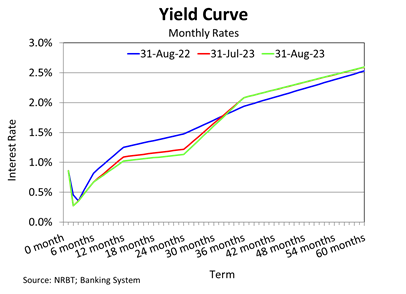Exports doubled due to late yam harvesting season
- Details
- Category: Economic Release
- Created: 30 June 2016
Agricultural Exports Volume
April 2016
| Apr 16 | Mar 16 |
Feb 16 |
Jan 16 |
|
| Total volumes (tonnes) |
759.5 | 340.3 | 325.0 | 171.7 |
Exports doubled due to late yam harvesting season
A rebound in the exports of root vegetable products drove a significant rise in total agricultural exports volume over the month by 419.2 tonnes (123.2%). All root vegetable products rose with exports of yams markedly increased by 338.8 tonnes reflecting the harvesting season of late yams. Exports of cassava rose by 20.2 tonnes (17.5%), sweet potato by 6.1 tonnes (29.6%) and swamp taro by 2.8 tonnes (39.9%). Despite the ban on exports of fresh breadfruit, the export of frozen breadfruit continued where it rose by 33.7 tonnes (284.9%) compared to previous month reflecting the breadfruit season. Brown coconuts exports also continued to rise by 20.4 tonnes (17.5%). Other vegetable products also increased by 0.8 tonnes (89.6%) particularly taro tarua and pele leaves. The shortage in supply of Kava-Tonga reflected a decline in Kava exports by 1.2 tonnes (11.6%).
The agricultural export proceeds however fell by $0.2 million (53.8%) to $0.18 million in April, driven by a fall in receipts denominated in New Zealand dollar, Tongan pa’anga and also Australian dollar.
The continuous decreased in supply of root vegetable products drove a decline in the total agricultural exports volume over the year by 413.8 tonnes (4.6%). This was mainly due to a significant fall in exports of taro (giant, swamp, tarua) by 1,379.0 tonnes (85.5%) and a decline in yam exports by 470.5 tonnes (36.1%). In addition, vegetable products exports also decreased by 28.5 tonnes (56.3%), mainly on taro tarua and pele leaves. Exports of sandalwood fell as well by 7.6 tonnes (87.5%). The unfavourable weather conditions throughout the year could have affected the agricultural production, driving the domestic prices to increase by 5.9%. The fall in total exports volume over the year was somewhat offset by a rise in the exports of squash and kava products by 1,568.7 tonnes (71.2%) and 41.6 tonnes (18.5%) respectively. The annual agricultural export receipts however rose by $1.0 million (19.7%) to $6.01 million. The higher export receipts for squash and kava outweighed the lower receipts for root crops and vegetable products. This is supported by the strengthening of the US dollar, Japanese Yen and Australian dollar against the Tongan Pa’anga.
The 2015/16 year has seen better weather conditions than that of the previous year, the NRBT maintains its forecast of a rebound in the agricultural sector for 2015/16. The higher squash exports during the 2015 squash season supports this projection. Additionally, the re-opening of the HTFA facility at the Fua’amotu airport would support the exportation of papaya, tomatoes and the new products to be introduced such as chillies and eggplant. The possibility of a new market for Tonga squash exports to China may boost total agricultural exports volumes. The initiatives from the January 2016 Agricultural Annual Conference to improve the existing infrastructure for farmers should also support the forecast of higher agricultural output. In contrast, exports of kava-Tonga are expected to decline as liaisons with growers have indicated low supply for the next 3 years due to the drought. However, the latest revised media release by the Meteorology Division advised that El Niño conditions (drier than normal) is now at moderate levels and likely to end in the second quarter of 2016. The outlook indicated that neutral conditions are slightly favoured ahead of La Niña for the second half of 2016 and rainfall for the next 3 months will remain below normal. This poses a risk for the outlook of the agricultural sector.
Download the full report: Agricultural Exports Volumes - April 2016

